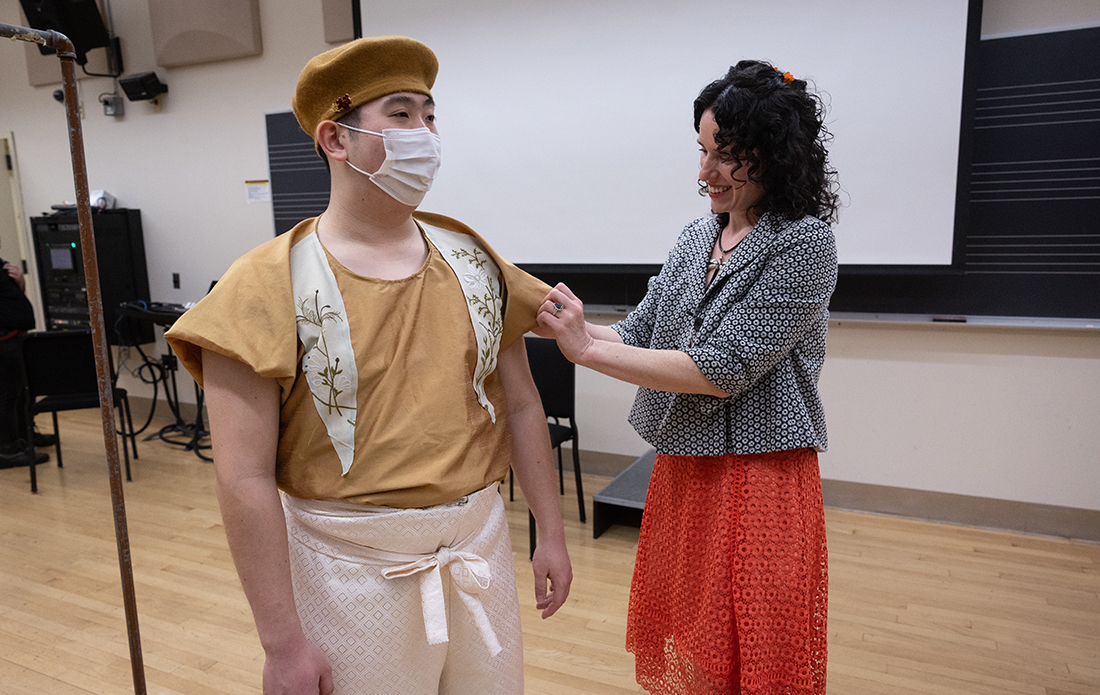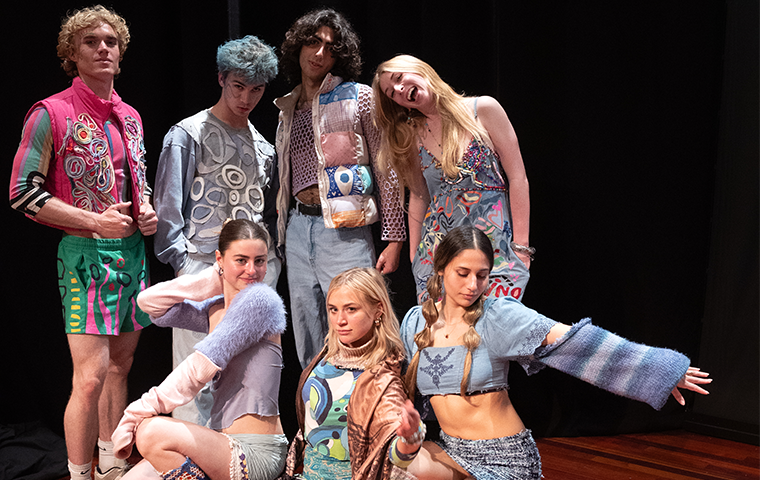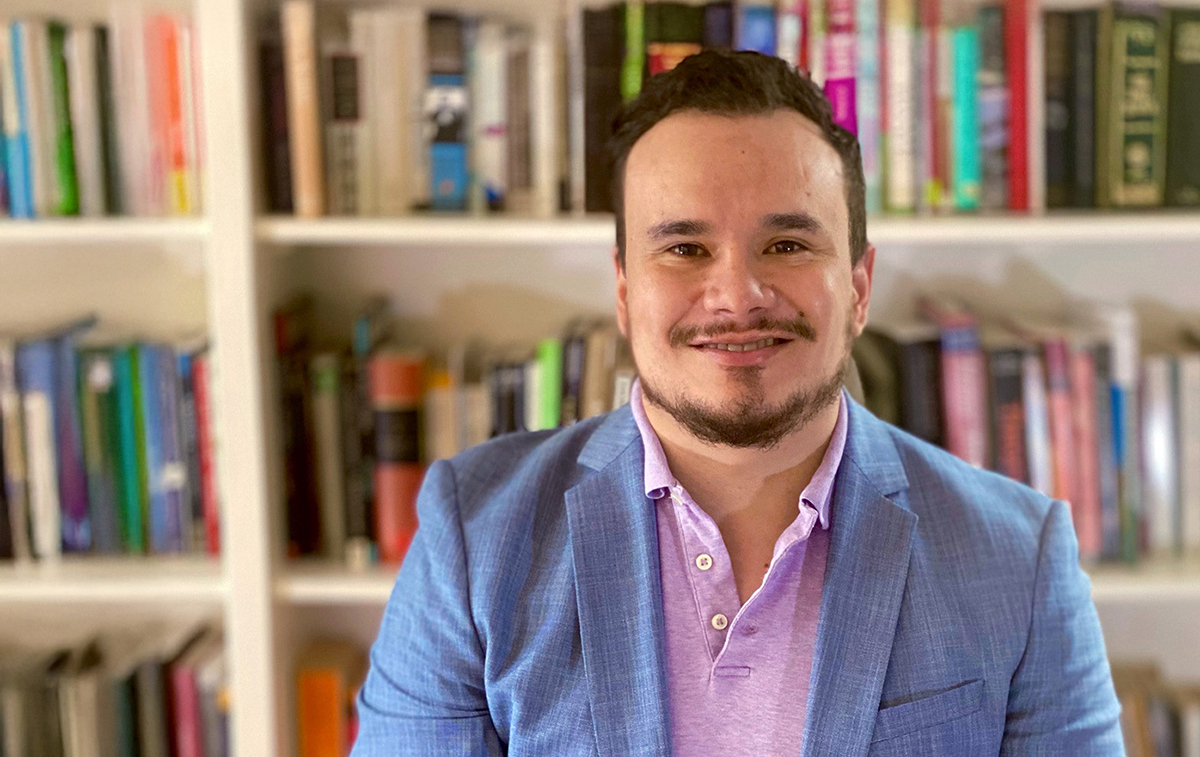Breathing New Life Into Old Clothes

Growing up, Regina Jones ’23 couldn’t afford the popular clothing brands many of her peers wore to school. So she learned to be resourceful, transforming thrifted clothing into contemporary designs she sewed by hand, and later with a sewing machine.
“I looked at the way garments were constructed and just reverse-engineered them,” says Jones of her first creation—a halter top she made from a button-down collared shirt. “I remember thinking, ‘OK, I can see what’s happening here.’”
Over time, her love of thrifting, redesigning and repurposing cast-off textiles for other uses not only saved her money, it sparked her passion for sustainability and concern about the life cycle of the materials in everything we wear.
Jones knows that the tons of discarded clothing—much of it mass-produced by “fast-fashion” companies trying to capture the latest designer trends with cheaply-made imitations—doesn’t just generate greenhouse methane gas as it decomposes in U.S. landfills. Mountains of garments and textiles are shipped to under-developed countries where the items can clog rivers, and pollute the air when the garments are incinerated.
So it’s no surprise how enthusiastically Jones, who graduated in December with a degree in environmental studies, has embraced Santa Clara’s annual EcoFashion Show, first as a student coordinator for career empowerment, and more recently as a designer at this year’s event on March 8.
Textile wastelands
Started in 2011 by Michelle Tang ’13, the show seeks to educate the SCU community about the impact of the fashion industry on the environment, emphasizing reuse, upcycling, and re-purposing of clothing that students, staff, faculty and alumni already have. The production was co-hosted by the Center for Sustainability, the SCU Career Center, and SCU Presents.
“It’s hard for me to look at anything like clothing and not think about how that garment started in a textile factory, and how that garment could be worn, and what happens when a person is done using it,” says Jones.
She points to studies that show the average U.S. consumer throws away approximately 81.5 pounds of clothes annually, leading to an estimated 11.3 million tons of textile waste in America alone.
“It’s a huge detrimental impact, all because we discard our clothes so quickly.”
A group of students pose in upcycled designs they modeled in the show.
Maximize comfort for all body shapes
For her EcoFashion Show project, Jones set out to accomplish two goals. First, salute the anonymous workers who created the textiles she planned to use in her design. And second, address an idea that colleagues at SCU’s Career Center suggested after she asked what they'd change about today’s standard workwear. Their answer? Maximize comfort for all body shapes.
“Our bodies fluctuate so much in our lives,” Jones says. “How could we make clothing that adjusts to those needs?” Her design solution was a loose-fitting shirt and pants ensemble, the latter inspired by Thai fishing pants, or doshi pants that are worn in India. “They give the body room to move and breathe for work and after work,” she explains.
True to her thrifting heritage, Jones used an array of cast-off fabrics to create the outfit, from remnants of bolts of textured white cotton left over from past SCU theater productions to gold brocade Veratex-brand curtains she’d acquired from a neighbor years ago, embellished with cotton appliques pulled from a thrifted J. Crew skirt she’d outgrown. Jones outlined the embroidery with blue tailor’s chalk to honor the seamstresses she was inspired by.
Finally, ribbons once used for gift wrap were used to tie the top, both front and back, on Jones’ student model Sean Tsang ’27. The adjustable-sized work-to-evening wear outfit even won her the award for “Most Imaginative Design.”
As Jones prepares for job interviews with companies and local government offices focused on sustainability issues, she believes employers can benefit from her Santa Clara experience, and her lifelong philosophy of reusing goods that reduce both costs and the impact on our planet.
“I grew up loving nature and the outdoors, so I really care about resources, ecology and restoration,” says Jones.
“But I have this nagging thought that won’t go away: How can we recirculate the abundant resources that already exist, and move them from the ones who have too much to those who really need it? Kind of a reallocation of excesses.”
The Center for Sustainability helps students understand sustainability and justice through on- and off-campus programs that help the University reach its goal of climate neutrality, practice responsible consumerism, strengthen a culture of sustainability, and use the campus to help develop solutions.


